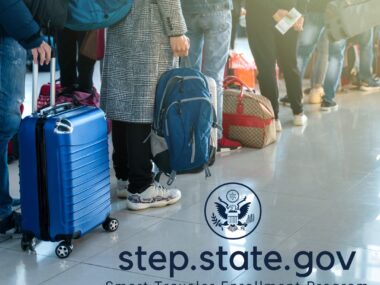Types of US Visas for Immigrants and Non-Immigrants, 2025
U.S. immigration regulations are changing for 2025, and millions of individuals around the world have to choose which visa is best for them. Your experience in America may change if you decide to apply for an immigrant visa (the path to a Green Card) or a non-immigrant visa (for temporary trips).
Another thing we do here is to give you first class tips about abroad study, work and live.
We also have a community group where you can get latest update about US, Canada, UK, Germany, Australia and so on.
Click here to join our WhatsApp, Telegram and YouTube Channel
The two (2) U.S. visa categories (immigrant and non-immigrant visas) are clearly compared in this extensive paper, which highlights the most recent developments, eligibility requirements, and important distinctions to help you make an informed decision and navigate the complexity of the U.S. visa system.
Beginning in 2025, we lay down the fundamentals so you can successfully follow your American dream, from job prospects to family reunions and all in between!
Immigrant Visas
An immigrant visa is required for anyone who want to live and work in the US permanently. These visas are often used to earn a green card, which grants permanent resident status. An immigrant visa is typically sponsored by an employer, a family member, or a special scheme such as the Diversity Visa Lottery.
Read Also: Jobs in Canada That Skilled Immigrants Will Need in 2025
| US Immigrant Visa Types for 2025 | ||
| Category | Visa Type | Description |
| Family-Based Immigrant Visas | Immediate Relative Visas (IR-1, IR-2, etc.) | For spouses, children, and parents of U.S. citizens. |
| Family Preference Visas (F1, F2A, F2B, F3, F4) | For extended family members, such as siblings or adult children. | |
| Employment-Based Immigrant Visas (EB Visas) | EB-1 | For individuals with extraordinary abilities, outstanding professors, researchers, or multinational executives. |
| EB-2 | For professionals with advanced degrees or exceptional ability in sciences, arts, or business. | |
| EB-3 | For skilled workers, professionals, or unskilled workers. | |
| EB-4 | For special categories, such as religious workers or certain international employees. | |
| EB-5 | For investors who make a substantial financial investment in a U.S. business. | |
| Diversity Visa (DV) Lottery | N/A | Grants 50,000 immigrant visas annually to applicants from countries with low immigration rates to the U.S. |
| Humanitarian Visas | N/A | Includes visas for refugees, asylum seekers, and individuals under the Violence Against Women Act (VAWA). |
Non-Immigrant Visas
| Nonimmigrant visas, on the other hand, are meant for short-term trips to the US. These visas are issued for a variety of purposes, including temporary employment, business, education, and travel. Non-immigrant visa holders have certain expiration dates for their visas, and they must leave the country before then.
US Non-immigrant Visa Types for 2025 |
||
| Category | Visa Type | Description |
| Tourism and Business Visas | B-1 | For business purposes such as attending conferences or negotiating contracts. |
| B-2 | For tourism, vacations, or medical treatment. | |
| Student Visas | F-1 | For academic studies at accredited institutions. |
| M-1 | For vocational or non-academic training. | |
| J-1 | For exchange visitors in approved programs, including students, researchers, and interns. | |
| Temporary Worker Visas | H-1B | For specialty occupations requiring a bachelor’s degree or higher. |
| H-2A | For temporary agricultural workers. | |
| H-2B | For non-agricultural seasonal workers. | |
| O-1 | For individuals with extraordinary abilities in sciences, arts, education, or athletics. | |
| L-1 | For intra-company transferees. | |
| Cultural and Media Visas | P Visas | For athletes, artists, and entertainers. |
| I Visas | For members of the foreign press or media. | |
| Transit and Crew Member Visas | C-1 | For individuals transiting through the U.S. |
| D | For crew members working on vessels or airlines. | |
| Specialty Visas | K-1 | For fiancés of U.S. citizens. |
| TN/TD | For Canadian and Mexican citizens under NAFTA/USMCA agreements. | |
How to Choose the Right US Visa in 2025?
1. Define Your Purpose
Your purpose for traveling or staying in the U.S. is critical in determining the appropriate visa category.
- Temporary Visit: If visiting for tourism, business meetings, or short-term study, consider a non-immigrant visa like B-1/B-2 or F-1.
- Permanent Relocation: If you intend to live, work, or reunite with family permanently, explore immigrant visas like family-based or employment-based green cards.
2. Assess Eligibility
Each visa type has specific eligibility requirements.
- Tourist/Business Visa (B-1/B-2): Proof of ties to your home country, intent to return, and sufficient financial means.
- Work Visas (H-1B, L-1, O-1, etc.): Employer sponsorship, specialized skills, or extraordinary talent in a specific field.
- Student Visa (F-1, M-1): Acceptance from a U.S. educational institution and evidence of financial support.
- Family-Based Visas: Proof of a qualifying family relationship with a U.S. citizen or lawful permanent resident.
3. Understand Visa Limitations
Each visa comes with specific restrictions.
- Non-immigrant Visas: Typically temporary, with limits on duration and activities (e.g., B-2 visitors cannot work).
- Immigrant Visas: Permit permanent residency but require longer processing times and more documentation.
- Dual-Intent Visas (e.g., H-1B, L-1): Allow temporary work with the possibility of applying for a green card.
4. Research Application Process and Fees
- Understand the process, documents, and fees for each visa type.
- Be prepared for interviews, biometric appointments, and wait times.
5. Consult Official Resources or Experts
- For the most recent information on visa requirements, see the official website of the U.S. Citizenship and Immigration Services (USCIS).
- For complicated situations or specialized visa choices, think about speaking with an immigration lawyer.
Popular Visa Categories in 2025
- H-1B: For specialized workers in fields like IT, engineering, and healthcare.
- O-1: For individuals with extraordinary ability in arts, sciences, or business.
- F-1/M-1: For international students pursuing academic or vocational studies.
- EB-2/EB-3: Employment-based green cards for skilled workers and professionals.
Benefits
| Feature / Benefit | Immigrant Visa (Green Card) | Non-Immigrant Visa (e.g., H-1B, F-1, B-1/B-2) |
| Residency Status | Permanent Resident (Green Card holder) | Temporary stay (valid for a specific period) |
| Work Authorization | Can work freely for any employer | Restricted to the specific employer or purpose (job, study, tourism) |
| Duration of Stay | Indefinite (renewable every 10 years) | Limited (e.g., H-1B – up to 6 years; F-1 – duration of study) |
| Path to Citizenship | Yes – eligible to apply for U.S. citizenship after 3–5 years | No – must convert to an immigrant visa to pursue citizenship |
| Freedom to Change Employers | Yes, without needing additional permissions | No – usually requires a new visa or amendment |
| Family Sponsorship Rights | Can sponsor spouse, children, and later extended family | Limited or none |
| Access to Government Benefits | Eligible for many federal/state benefits (after 5 years in some cases) | Not eligible for most government-funded benefits |
| In-State Tuition Eligibility (Students) | Eligible after residency in a state | Usually pay out-of-state/international fees |
| Social Security & Medicare Access | Eligible after paying into the system | Not eligible unless they convert to immigrant status |
| Travel Flexibility | Can travel in and out of the U.S. more freely | Subject to visa renewal and re-entry restrictions |
Important Updates for 2025
- Increased Visa Numbers: Higher quotas for specific nations are anticipated for employment-based categories.
- Digital Application Processes: Improved online visa application procedures are being introduced by numerous American embassies and consulates.
- Streamlined Interviews: Under certain circumstances, more categories are now eligible for interview waivers.
List of US Immigrant Visa US Non-immigrant Visas
Conclusion
Choosing a visa, whether immigrant or non-immigrant, is crucial to your stay in the US. Understanding your choices, eligibility, and the latest advancements is crucial for effectively navigating the visa application process in 2025. Whether you want a temporary stay or permanent residency, preparation and professional advice will help you achieve your American dream.
If what we have provided for you is good, then kindly make sure that you follow our link update here.
Click here to join our WhatsApp, Telegram and YouTube Group
Disclaimer!!!
This information is based on personal research and experience, please kindly do your own research and cross-check all the details before making your decisions.
Read Also:
Singaporean Jobs for Immigrants: Full Application Is Here
Swedish Jobs for Immigrants: A New Opportunity for You
How to Apply for Canada Pilot Caregiver Visa 2025
Visa Sponsorship Offered: Female Health Care Assistant In Surrey UK
Best U.S. Companies Offering High-Paying Jobs and Visa Sponsorship for Foreigners
These five Canadian Comapnies are always hiring people from abroad
4 provinces To Work in Canada To Get Your Permanent Resident After 6 Months
How to Apply for the USA Diversity Visa Lottery Sponsorship Program – Visit Here
Best Ways to Find Affordable Flights to the USA with Flexible Change Policies





